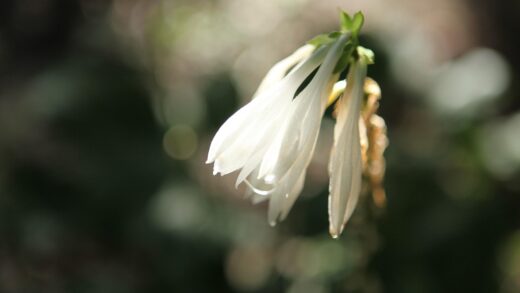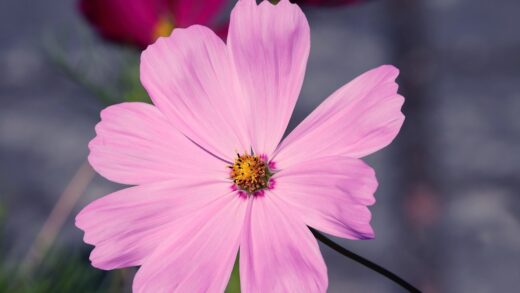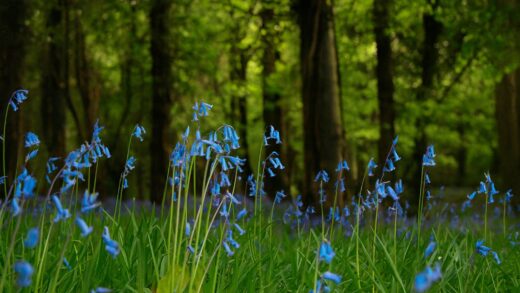The successful establishment of Lithodora diffusa begins long before the plant is placed in the ground, hinging on meticulous preparation and a deep understanding of its fundamental needs. This vibrant, mat-forming shrub is not a plant that tolerates casual placement; it demands specific conditions to unleash its spectacular display of gentian-blue flowers. The entire process, from choosing the perfect location to the delicate act of settling it into its new home, is a rewarding endeavor that pays dividends in years of stunning color. Success is rooted in replicating its native environment, focusing on creating acidic, well-drained soil that allows its sensitive root system to thrive. Therefore, the initial planting phase should be viewed as laying the critical foundation upon which the plant’s future health and performance will be built, making careful planning an indispensable part of the journey.
The selection of the plant itself is a crucial preliminary step that often gets overlooked. When purchasing a Lithodora from a nursery or garden center, it is important to choose a specimen that looks healthy, vigorous, and well-established in its pot. Look for a plant with dense, dark green foliage and avoid any that show signs of yellowing leaves (chlorosis), which could indicate it has already been stressed by alkaline conditions. Check the root system if possible by gently tapping the plant out of its pot; healthy roots should be white or light-colored and fill the container without being excessively pot-bound. Starting with a strong, healthy plant gives you a significant advantage and increases the likelihood of successful establishment in the garden.
Timing the planting correctly is another key factor that can greatly influence the outcome. The ideal times to plant Lithodora diffusa are in the spring, after the last frost has passed, or in early autumn. Spring planting allows the shrub to utilize the entire growing season to develop a robust root system before the onset of winter. Autumn planting is also effective, particularly in milder climates, as the warm soil encourages root growth while the cooler air temperatures reduce the stress on the plant’s foliage. Avoid planting during the peak heat of summer, as this can place extreme stress on the plant, or in late autumn, which may not give it enough time to establish before the ground freezes.
Preparing the planting hole is the final and most hands-on part of the pre-planting process. The hole should be dug at least twice as wide as the plant’s root ball but no deeper. Digging a wide hole allows you to amend a larger area of surrounding soil, creating a more welcoming transition zone for the new roots to grow into. Backfilling this wider hole with a mixture of the native soil and a generous amount of ericaceous compost and horticultural grit will establish the acidic, free-draining environment that is essential for the plant’s survival. This careful preparation is far more effective than simply amending the small amount of soil used to backfill a tight hole.
Choosing the perfect location
Selecting the right spot in the garden is a foundational decision that will determine the long-term success of your Lithodora. The plant’s primary requirement is for acidic soil, so choosing an area where this condition naturally exists or can be easily created is paramount. It’s often beneficial to plant it alongside other acid-loving plants like rhododendrons, azaleas, or heathers, as this indicates the area is likely suitable. Before making a final decision, performing a simple pH test on the soil in the potential location can save a great deal of effort and potential disappointment later on, confirming that you are starting with the right chemical foundation.
More articles on this topic
The amount of sunlight the location receives is another critical consideration that must be tailored to your specific climate. In cooler, more temperate regions, a position in full sun is ideal, as it promotes the most prolific blooming and helps maintain a compact, dense form. However, in areas with very hot summers, the intense afternoon sun can scorch the foliage and cause the plant to struggle. In such climates, a spot that receives ample morning sun but is protected by light, dappled shade during the hottest part of the afternoon provides the perfect balance, ensuring vibrant flowering without the stress of excessive heat.
Consider the physical characteristics of the location and how they will benefit the plant’s growth habit. Lithodora is a natural choice for rock gardens, where it can nestle between stones, benefiting from the sharp drainage and radiant heat. It also excels when planted at the top of retaining walls or in raised beds, where its cascading foliage can spill over the edges, creating a stunning visual effect. Planting on a natural slope is another excellent strategy, as it inherently provides the excellent drainage that is so crucial for preventing root rot, effectively using the garden’s topography to meet the plant’s needs.
Finally, think about the plant’s placement in the broader garden design. Its low, spreading nature makes it an exceptional ground cover for suppressing weeds and providing a carpet of year-round green. It serves beautifully as an edging plant for pathways and borders, defining spaces with a ribbon of intense blue in the spring and summer. When selecting its companions, choose plants with contrasting textures or colors that will complement its fine foliage and vibrant flowers. Placing it near plants with silver or golden foliage, for example, can create a striking and harmonious visual composition.
The step-by-step planting process
Once the site has been meticulously prepared, the actual process of planting Lithodora diffusa can begin. Start by thoroughly watering the plant in its original container about an hour before you intend to plant it. This ensures that the root ball is fully hydrated, which reduces the risk of transplant shock and helps the plant settle into its new environment more easily. A well-watered plant is less likely to wilt, and the moist soil will hold together better when you are removing it from the pot, minimizing disturbance to the delicate root system.
More articles on this topic
When you are ready to plant, carefully remove the Lithodora from its pot, taking care not to damage the stems or roots. If the plant is pot-bound, meaning the roots are tightly coiled around the inside of the container, it is important to gently tease them apart. Use your fingers or a small hand fork to loosen the bottom and side roots, encouraging them to grow outwards into the new soil rather than continuing to circle in their original shape. This simple step is vital for promoting rapid establishment and preventing the plant from becoming permanently stunted due to a restricted root system.
Place the plant in the center of the prepared planting hole, ensuring that the top of its root ball is level with or slightly above the surrounding soil surface. Planting too deeply can lead to the crown of the plant rotting, a common and often fatal mistake. Once you are satisfied with the depth, begin backfilling the hole with the amended soil mixture you prepared earlier, gently firming the soil around the root ball with your hands as you go. This eliminates any large air pockets, which can dry out the roots, and ensures good contact between the roots and the soil.
After the hole is completely backfilled, the final step is to water the plant in thoroughly. This is arguably the most important watering the plant will ever receive, as it helps to settle the soil firmly around the roots and removes any remaining air pockets. Create a small basin or moat of soil around the base of the plant to help hold the water and allow it to soak down directly to the root zone. A slow, deep watering is far more effective than a quick splash. For the first few weeks, continue to monitor the soil moisture carefully, watering regularly to help the plant establish itself in its new home.
Propagation through cuttings
Propagating Lithodora diffusa from cuttings is a highly effective and rewarding method for creating new plants, allowing you to easily increase your stock or replace older, woody specimens. The best time to take these cuttings is in early to mid-summer, after the main flush of flowering has subsided but before the season’s growth has fully hardened. This timing ensures the cutting material is at the ideal stage of maturity, known as semi-ripe, where it is firm enough to avoid rotting but still young enough to root readily. Select healthy, vigorous, non-flowering shoots from the current season’s growth for the highest chance of success.
To prepare the cuttings, use a sharp, clean knife or pair of secateurs to snip off shoots that are approximately two to three inches long. Make the cut just below a leaf node, which is the point on the stem where a leaf emerges, as this area is rich in hormones that encourage rooting. Once you have your shoots, carefully strip the leaves from the lower half of each cutting. This prevents the leaves from rotting when inserted into the rooting medium and reduces water loss through transpiration, allowing the cutting to focus its energy on developing roots rather than supporting excess foliage.
The rooting medium is a critical component for success and should be sterile, low in nutrients, and extremely well-draining. A mixture of equal parts peat-free compost or coir and perlite or coarse sand creates the perfect environment. Moisten the mixture before inserting the cuttings. To further increase the chances of rooting, you can dip the base of each cutting into a rooting hormone powder, tapping off any excess. Then, insert the prepared cuttings into the medium, ensuring the lowest remaining leaves are just above the surface, and firm the medium gently around them.
Once the cuttings are in place, they need to be kept in a warm, humid environment to encourage root formation. Covering the pot or tray with a clear plastic bag or placing it in a propagator will create the necessary greenhouse effect. Place the cuttings in a bright location that is out of direct sunlight, which could scorch them. Keep the rooting medium consistently moist but not waterlogged. Roots should begin to form within four to eight weeks, which you can test for by giving a cutting a very gentle tug; if you feel resistance, roots have formed. Once well-rooted, the new plants can be potted on individually to grow on before being planted out in the garden.
Starting from seed: a patient approach
Growing Lithodora diffusa from seed is a less common method of propagation, primarily because it requires more time and patience than taking cuttings, and the results can be more variable. However, it can be a fascinating and rewarding experience for the dedicated gardener. The seeds require a period of cold stratification to break their dormancy and trigger germination. This process mimics the natural winter conditions the seeds would experience in their native habitat. You can achieve this by sowing the seeds in a pot of moist, gritty compost in late autumn and leaving it outdoors in a cold frame or sheltered spot to overwinter.
Alternatively, for a more controlled approach, you can stratify the seeds artificially. Place the seeds in a small plastic bag with a handful of damp sand or vermiculite, seal the bag, and place it in the refrigerator for a period of four to six weeks. After this cold treatment, the seeds can be sown on the surface of a pot filled with a well-draining, acidic seed-starting mix. Lightly cover the seeds with a thin layer of compost or grit, as they need some light to germinate effectively. This method gives you more control over the timing and conditions.
Once sown, the pot should be placed in a warm, bright location, but not in direct, intense sunlight. Maintaining consistent moisture is key to successful germination; the compost should be kept damp but never soggy, as this can cause the seeds to rot. Using a spray bottle to mist the surface is a gentle way to water without dislodging the tiny seeds. Germination can be slow and erratic, sometimes taking several weeks or even months, so patience is absolutely essential during this stage. A heated propagator can sometimes help to speed up and even out the germination process.
After the seedlings have emerged and developed their first set of true leaves, they are ready to be handled. Carefully prick them out and transplant them into individual small pots, using an acidic, free-draining potting mix. Take great care not to damage the delicate root systems during this process. Grow the young plants on in a bright, sheltered location, allowing them to develop a strong root system before gradually hardening them off to outdoor conditions. It will likely take at least a year or two for these seed-grown plants to reach a size where they are ready for their final positions in the garden.


















